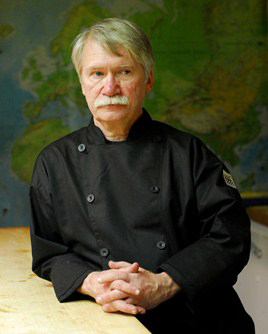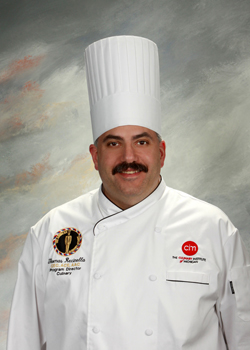Gastrotypographicalassemblage Brings New Culinary Art to the CIA
 Famous artwork by Lou Dorfsman, to be showcased in The Culinary Institute of America’s new Marriott Pavilion, will support the Hudson Valley as a destination for art and culture.
Famous artwork by Lou Dorfsman, to be showcased in The Culinary Institute of America’s new Marriott Pavilion, will support the Hudson Valley as a destination for art and culture.
For the last 25 years one of the world’s largest modern typographic artworks has been hidden away in a basement on Long Island. This will change in January 2014 when the work, “Gastrotypographicalassemblage,” will become the focal point of The Culinary Institute of America's new Marriott Pavilion and Conference Center in Hyde Park, N.Y. The creation of legendary CBS art director and designer Lou Dorfsman, the work measures more than 33 feet wide and 8 feet tall, and consists of more than 1,650 individual letters spelling out culinary terminology and expressions, as well as 65 food-related objects.
From 1966 to 1989, Gastrotypographicalassemblage was on display in the staff dining room at CBS Network headquarters in the legendary Black Rock building in New York City. There it captured the imaginations of both visitors and employees, but in 1989 the work was removed during a renovation. Without a new home, it was saved from the landfill by designer Nick Fasciano, who stored the mural for more than two decades while Dorfsman worked to find it a new venue.

 For the first time, says Technomic, a majority of U.S. consumers prefers hot or spicy flavors. And sweet is the ultimate pairing partner when staying ahead of the flavor curve.
For the first time, says Technomic, a majority of U.S. consumers prefers hot or spicy flavors. And sweet is the ultimate pairing partner when staying ahead of the flavor curve. The advantages of peer coaching include helping people realize they can solve their own problems while helping others. It also broadens their awareness of how many people they can call on for assistance.
The advantages of peer coaching include helping people realize they can solve their own problems while helping others. It also broadens their awareness of how many people they can call on for assistance. Using games to teach will get both you and your students out of a rut. A round of Hangman, anyone?
Using games to teach will get both you and your students out of a rut. A round of Hangman, anyone? “The Gold Medal Classroom” launches a new editorial department and forum for deans and directors in 2014: a leadership think tank.
“The Gold Medal Classroom” launches a new editorial department and forum for deans and directors in 2014: a leadership think tank. Courtesy of The Culinary Institute of America’s
Courtesy of The Culinary Institute of America’s  $1,000 Grand Prize and $500 Runner-up prize, instructor incentives. Sponsored by the National Honey Board (NHB) in partnership with “The Gold Medal Classroom.”
$1,000 Grand Prize and $500 Runner-up prize, instructor incentives. Sponsored by the National Honey Board (NHB) in partnership with “The Gold Medal Classroom.” Peter Lehmuller, Ed.D., has been appointed dean of the College of Culinary Arts at Johnson & Wales University (effective July 1, 2013). He was most recently the dean of Academic Affairs at the university’s Charlotte campus and has relocated to the university’s flagship campus in Providence, R.I.
Peter Lehmuller, Ed.D., has been appointed dean of the College of Culinary Arts at Johnson & Wales University (effective July 1, 2013). He was most recently the dean of Academic Affairs at the university’s Charlotte campus and has relocated to the university’s flagship campus in Providence, R.I. Entries in the 2013 Discover Duck Recipe Contest prove great tastes come in small packages. Sponsored by Maple Leaf Farms, the annual contest challenged professional chefs and culinary students to produce an original appetizer or small plate recipe showcasing Maple Leaf Farms duck. Nearly 250 entries from across the country were submitted, competing for more than $15,000 in cash prizes.
Entries in the 2013 Discover Duck Recipe Contest prove great tastes come in small packages. Sponsored by Maple Leaf Farms, the annual contest challenged professional chefs and culinary students to produce an original appetizer or small plate recipe showcasing Maple Leaf Farms duck. Nearly 250 entries from across the country were submitted, competing for more than $15,000 in cash prizes. Thomas Recinella, CEC, ACE, AAC, program director for Baker College of Port Huron’s Culinary Institute of Michigan, has been inducted into membership of the prestigious Disciples Escoffier International-USA.
Thomas Recinella, CEC, ACE, AAC, program director for Baker College of Port Huron’s Culinary Institute of Michigan, has been inducted into membership of the prestigious Disciples Escoffier International-USA.